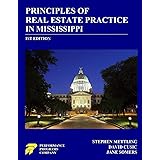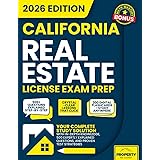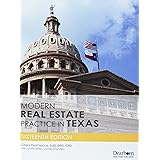Are you a seasoned real estate investor, perhaps a house flipper or a landlord, finding yourself increasingly frustrated by market inconsistencies, slim deal flow, and dwindling profits? The challenges of traditional real estate ventures, such as the constant search for new deals, fluctuating appraisals, and the sheer volume of work required, are often cited as reasons for investor burnout. For many, the goal of substantial wealth building and consistent cash flow seems perpetually out of reach in a rapidly shifting economic landscape.
As discussed in the accompanying video, the traditional landscape of real estate investing, from house flipping to multi-family units, is perceived by some as entering a period of decline. The speaker, a former full-time house flipper who successfully transitioned, offers a compelling alternative: the burgeoning market of Assisted Living. This shift is presented not merely as a change in asset class but as an opportunity for sustained wealth creation and a more consistent business model.
The Shifting Tides of Real Estate Investment: Why Old Models Are Struggling
For years, strategies like house flipping and wholesaling were celebrated as pathways to significant returns. Investors would often dedicate substantial resources to marketing, employing direct mail campaigns, pay-per-click advertising, cold calling, and door-knocking teams to unearth profitable opportunities. However, the market’s inherent volatility meant that periods of high activity and substantial earnings were frequently followed by sharp declines. A thriving market could suddenly become oversaturated, or economic shifts could drastically reduce demand, leaving investors with increased expenses and a dwindling deal pipeline.
Consider the common scenario where a successful period of house flipping leads to expanded teams and increased marketing budgets. When the market inevitably contracts or competition intensifies, these overheads can quickly erode profits, transforming a once-lucrative venture into a financial strain. Rental properties, while offering a long-term play, are often characterized by low monthly cash flow and significant management headaches, particularly for investors operating in high-cost-of-living areas. These properties, while contributing to a balance sheet, were not observed to be a rapid path to millionaire status for the speaker, often providing only modest returns after expenses and requiring considerable owner involvement.
Why Assisted Living is the Next Frontier for Wealth Building
The core of this investment pivot lies in a powerful demographic trend: the aging baby boomer generation. With a substantial portion of this demographic reaching ages 65-80, a massive demand for senior care and living facilities is being created. This demographic wave is expected to continue for the next 20 to 25 years, ensuring a sustained need for high-quality Assisted Living services.
Beyond the sheer volume of aging individuals, a critical supply-demand imbalance exacerbates the opportunity. Current construction rates for new senior living facilities are estimated to meet only 25% to 33% of the actual need. This significant deficit is further compounded by the reluctance of large corporate entities and Real Estate Investment Trusts (REITs) to invest heavily in new developments due to high interest rates and post-pandemic shifts in preferences. Consequently, a substantial gap exists, waiting to be filled by agile investors. This demographic and market dynamic positions Assisted Living as a particularly resilient and profitable sector, largely insulated from the boom-and-bust cycles that plague other real estate segments.
Beyond Traditional Residential Assisted Living: The ‘Mansion’ Model
It is important to distinguish between different models within the Assisted Living sector. The speaker clarifies that the focus is not on small, residential assisted living (RAL) homes, often characterized by converting a standard house to accommodate six to eight residents. This “dog crap” model, as it is candidly described, often struggles with scalability and profitability due to insufficient revenue to support quality staffing and operations.
Instead, the proposed model centers on building and operating “Assisted Living Mansions”—custom-built, luxury facilities typically spanning 10,000 square feet and featuring 16 private rooms, each with a full bathroom. These Mansions are designed to offer a superior, more intimate environment than large, impersonal institutional facilities, yet provide comprehensive care, including memory care, physical therapy, occupational therapy, hospice, and on-site medical professionals. Amenities like a library, salon, and a dedicated chef who can cater to individual dietary needs are standard, creating a boutique hotel-like experience that stands in stark contrast to the “smelly facilities” often found in the market. This unique approach allows for personalized care while maintaining the economies of scale necessary for robust profitability.
The Financial Blueprint: Cash Flow and Long-Term Wealth
The financial potential of the Assisted Living Mansion model is presented as a compelling argument for its adoption. Per Mansion, the top-line income from resident rents is aimed at approximately $120,000 per month. Even after accounting for significant operational expenses, including staffing, management, and real estate costs, a consistent net profit of around $40,000 per month is achievable. This translates to an annual net income of $400,000 to $500,000 for the owner, representing a substantial improvement over the erratic returns often experienced in house flipping or the modest cash flow from traditional rentals.
Furthermore, the investment creates significant long-term real estate wealth. Each new construction Assisted Living Mansion is typically built for approximately $3 million, encompassing both hard and soft costs. Upon completion, these properties are often appraised at around $6 million, with $5 million attributed to the real property and $1 million to the established operations company. This immediate equity gain, combined with the ongoing cash flow, provides a powerful dual-pronged approach to wealth accumulation. Financing for these ventures is frequently secured through Small Business Administration (SBA) loans, which are designed for businesses rather than pure real estate investments. These loans can cover a significant portion of the costs, including land acquisition, construction, reserves, working capital, and furniture, fixtures, and equipment (FF&E), often requiring only a 10-15% down payment. This makes the venture accessible without demanding an inordinate amount of upfront capital from investors.
Building an Active Business with a Heart
It is critical to understand that this model is not presented as a passive investment but rather as an active business with a substantial real estate component. The operations company, responsible for hiring staff, managing care, and ensuring resident well-being, requires active involvement, particularly in the initial phases. The distinction is made clear: while some large facilities operate on a lease-only model, renting out their buildings to management companies, these often struggle with high turnover and low occupancy due to a detachment from the quality of care. The speaker emphasizes that genuine care and an active, hands-on approach to operations are paramount for success and reputation.
For real estate investors who may lack medical experience, this should not be a deterrent. The speaker himself had no medical background. The strategy involves hiring an experienced medical professional, such as a manager from a large facility, offering competitive salaries and profit-sharing agreements to ensure their vested interest. This allows the owners to learn the operational systems, medical protocols, and dementia care specifics from an expert, effectively building a robust team and system within the first year. The industry itself is often described as outdated, with many larger corporations adhering to antiquated models of care and facility design. This stagnation provides an advantage for newcomers who approach the business with a fresh, resident-centric perspective, challenging norms and designing facilities and services based on what residents and their families truly desire.
Achieving “Relatively Passive” Freedom
While the initial year or so of building an Assisted Living Mansion operation is intensive, requiring significant owner involvement to establish systems and train staff, the model is structured to eventually allow for remarkable time freedom. After the initial stabilization period, which includes hiring a strong manager and dedicated caregivers and med techs, owners can drastically reduce their active working hours. The speaker’s personal experience indicates a reduction to a few hours per week after approximately two years, illustrating the potential for a “relatively passive” active business once a robust team and operational systems are firmly in place. This includes empowering staff with higher wages and better benefits than those typically offered by larger, struggling facilities, which helps attract and retain top talent. This insulation on the management and staffing side is crucial, ensuring that the business remains stable and profitable even when owners reduce their direct involvement. This established consistency, coupled with the substantial cash flow and long-term wealth building, ultimately allows investors to achieve both financial and time freedom—goals that often eluded them in the traditional, volatile world of house flipping.









